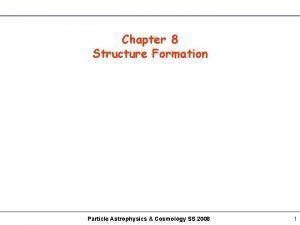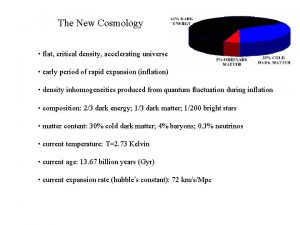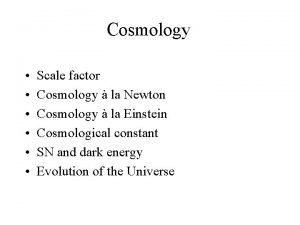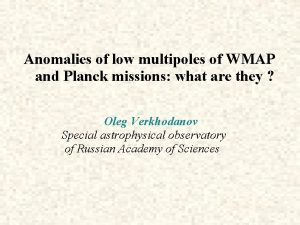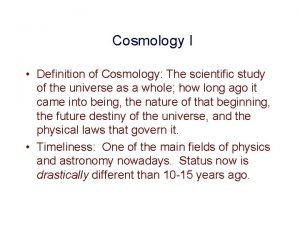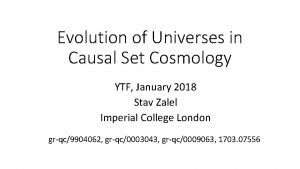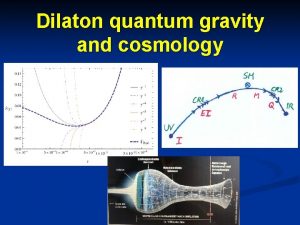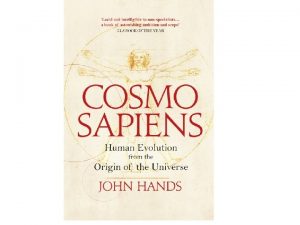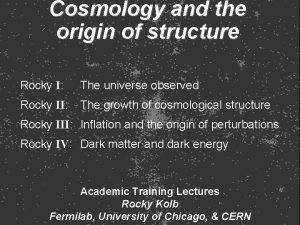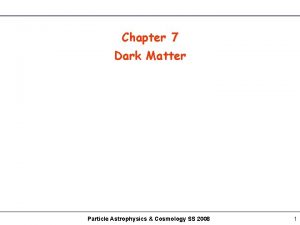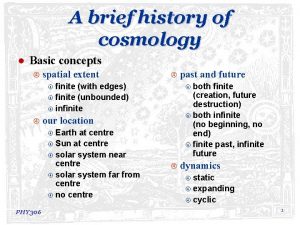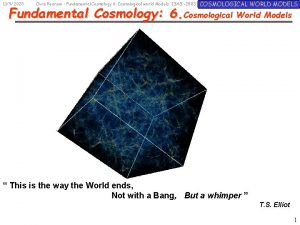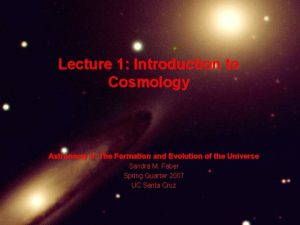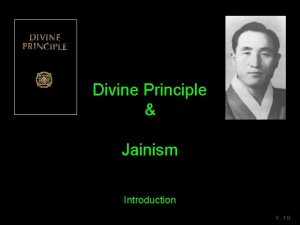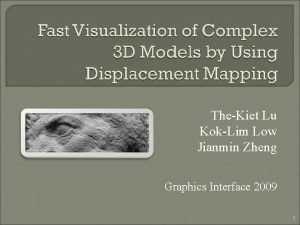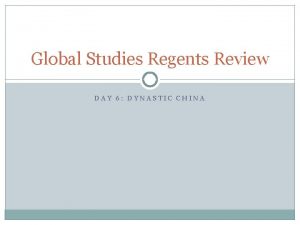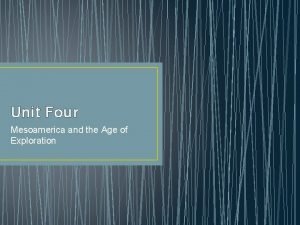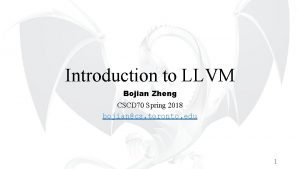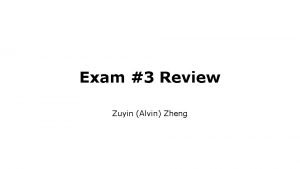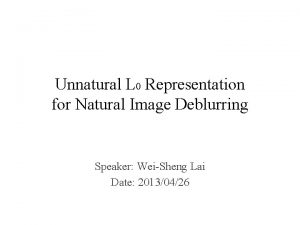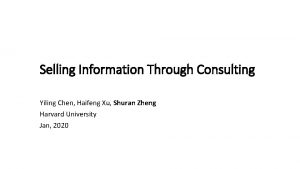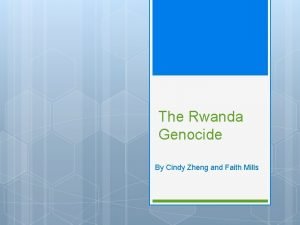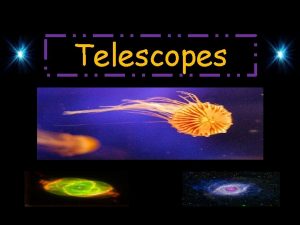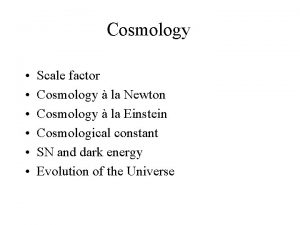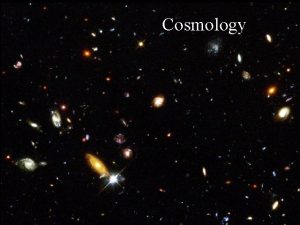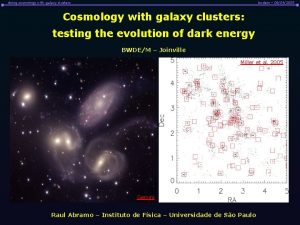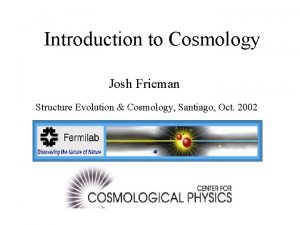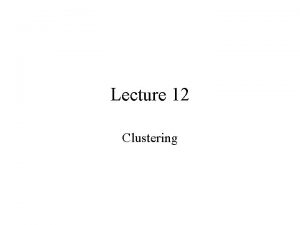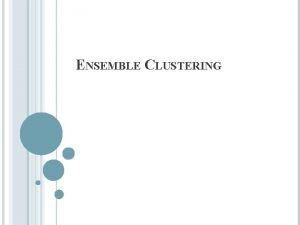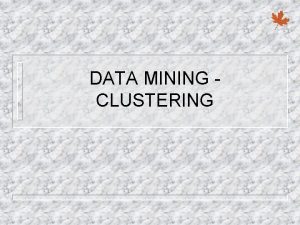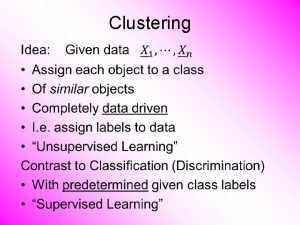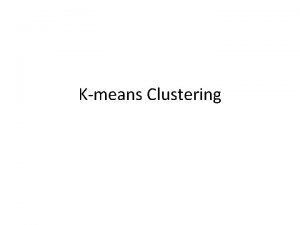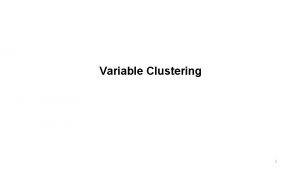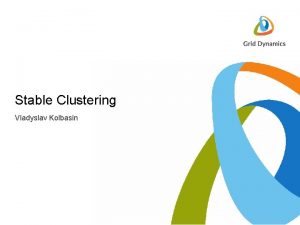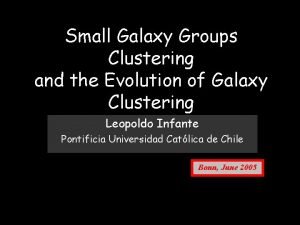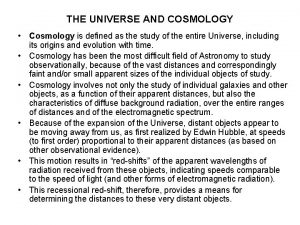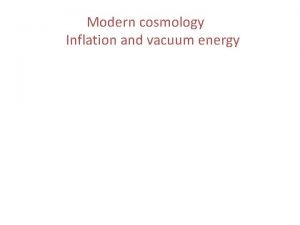Cosmology and Galaxy Evolution from Galaxy Clustering Zheng
































- Slides: 32

Cosmology and Galaxy Evolution from Galaxy Clustering Zheng Institute for Advanced Study

Outline: q Halo Occupation Distribution (HOD) q Breaking the Degeneracies between Cosmology and Galaxy Bias With David Weinberg (Ohio State University) (Zheng & Weinberg, astro-ph/0512071) q Evolution of Galaxies from HOD Modeling of DEEP 2 and SDSS Galaxy Clustering With Alison Coil (University of Arizona) Idit Zehavi (Case Western Reserve University)

Snapshot @ z~1100 Light-Mass relation well understood CMB from WMAP Snapshot @ z~0 Light-Mass relation not well understood Galaxies from SDSS

Cosmological Model initial conditions energy & matter contents Galaxy Formation Physics gas dynamics, cooling star formation, feedback m 8 ns Dark Halo Population n(M) (r|M) v(r|M) Halo Occupation Distribution P(N|M) spatial bias within halos velocity bias within halos Galaxy Clustering Galaxy-Mass Correlations

Halo Occupation Distribution (HOD) • P(N|M) Probability distribution of finding N galaxies in a halo of virial mass M mean occupation <N(M)> + higher moments • Spatial bias within halos Difference in the distribution profiles of dark matter and galaxies within halos • Velocity bias within halos Difference in the velocities of dark matter and galaxies within halos e. g. , Jing & Borner 1998; Ma & Fry 2000; Peacock & Smith 2000; Seljak 2000; Scoccimarro et al. 2001; Berlind & Weinberg 2002; Yang, Mo, & van den Bosch 2003; …

Cosmological Model initial conditions energy & matter contents Galaxy Formation Physics gas dynamics, cooling star formation, feedback m 8 ns Dark Halo Population n(M) (r|M) v(r|M) Halo Occupation Distribution P(N|M) spatial bias within halos velocity bias within halos Galaxy Clustering Galaxy-Mass Correlations

Cosmological Model initial conditions energy & matter contents Galaxy Formation Physics gas dynamics, cooling star formation, feedback m 8 ns Dark Halo Population n(M) (r|M) v(r|M) Halo Occupation Distribution P(N|M) spatial bias within halos velocity bias within halos Galaxy Clustering Galaxy-Mass Correlations

Cosmology from Galaxy Clustering? Cosmology A HOD A Halo Population A Galaxy Clustering Galaxy-Mass Correlations A Cosmology B Halo Population B = HOD B Galaxy Clustering Galaxy-Mass Correlations B

Halo populations from distinct cosmological models Changing m with 8, ns, and Fixed Zheng, Tinker, Weinberg, & Berlind 2002

Cosmology A HOD A Halo Population A Galaxy Clustering Galaxy-Mass Correlations A = Cosmology B Halo Population B HOD B Galaxy Clustering Galaxy-Mass Correlations B

Flexible HOD parameterization • P(N|M) Motivated by galaxy formation models Kravtsov et al. 2004; Zheng et al. 2005 • Spatial bias within halos Different concentrations of galaxy distribution and dark matter distribution ( c) • Velocity bias within halos v g= v v m

Observational quantities • Spatial Clustering Galaxy overdensity g(r) Group multiplicity function ngroup(>N) 2 -point and 3 -point correlation function of galaxies • Dynamically Sensitive Observables m 0. 6/bg Pairwise velocity dispersion v(r) Average virial mass of galaxy groups <Mvir(N)> • Galaxy-mass cross-correlation function m gm(r)

Constraints on HOD and cosmological parameters Changing m with 8, ns, and Fixed

Constraints on HOD parameters Changing m with 8, ns, and Fixed

Constraints on cosmological parameters Changing m only Cluster-normalized Changing 8 only Halo MF matched

Influence Matrix

Constraints on cosmological parameters Forecast : ~10% on m ~10% on 8 Abazajian et al. 2005 ~5% on 8 m 0. 75 From 30 observables of 8 different statistics with 10% fractional errors

Conclusion Galaxy bias and cosmology are not degenerate with respect to galaxy clustering. * HOD modeling can greatly increase the cosmological power of galaxy redshift survey by taking the advantage of high-precision clustering measurements at small and intermediate scales. * Simultaneously, using galaxy clustering data, we can constrain the HODs for different classes of galaxies, which provide valuable tests of galaxy formation models.

Cosmological Model initial conditions energy & matter contents Galaxy Formation Physics gas dynamics, cooling star formation, feedback m 8 ns Dark Halo Population n(M) (r|M) v(r|M) Halo Occupation Distribution P(N|M) spatial bias within halos velocity bias within halos Galaxy Clustering Galaxy-Mass Correlations

Galaxy Evolution from Galaxy Clustering Galaxy Samples Ø DEEP 2, z~1 (Coil et al 2006) Ø SDSS, z~0 (Zehavi et al 2005) Ø Measurements of two-point correlation functions as a function of luminosity

Two-point correlation function of galaxies Excess probability w. r. t. random distribution of finding galaxy pairs at a given separation 1 -halo term Central 2 -halo term Satellite

Halo Occupation Distribution For a sample of galaxies more luminous than Lmin Scatter between galaxy luminosity and host halo mass M 1 - mass of halos on average hosting one satellite galaxy above Lmin Mmin - characteristic minimum mass of halos hosting Lmin galaxies

Modeling results DEEP 2 galaxies L

Distribution of central galaxy luminosity

Mass scales of host halos

Establishing an evolution link between DEEP 2 and SDSS galaxies

Stellar mass evolution z~1 Star Merging Formation Merging z~0

Star formation efficiency vs Halo mass

Stellar mass evolution (z~1 to z~0) as a function of halo mass

z~1 Star Merging Formation z~0

Tentative conclusion: For central galaxies in z~0 M<1012 h-1 Msun halos, ~80% of their stars form after z~1 For central galaxies in z~0 M>1012 h-1 Msun halos, ~20 -40% of their stars form after z~1 Fardal et al. 2006

Summary & Future Work q HODs at z~1 and z~0 from modeling two-point correlation functions of DEEP 2 and SDSS galaxies Evolution link through halo evolution Stellar mass evolution from z~1 to z~0 for central galaxies as a function of halo mass (pure merger vs star formation) Useful constraints to galaxy formation models q Clustering measurements for galaxy samples based on stellar mass Galaxy samples at different redshifts Evolution of satellite galaxies
 Galaxys
Galaxys Flat vs hierarchical clustering
Flat vs hierarchical clustering L
L Rumus euclidean
Rumus euclidean Cosmology
Cosmology Critical density
Critical density Scale factor cosmology
Scale factor cosmology Multipole
Multipole Definition of cosmology
Definition of cosmology Cosmology
Cosmology Crossover cosmology
Crossover cosmology Concordance model of cosmology
Concordance model of cosmology Cosmology
Cosmology Cosmology
Cosmology Newton cosmology
Newton cosmology Cosmology
Cosmology Intro to cosmology
Intro to cosmology Jainism
Jainism Contents of biography
Contents of biography Jianmin zheng
Jianmin zheng El salto menu
El salto menu This map shows that the silk road
This map shows that the silk road Should we celebrate the voyages of zheng he dbq answer key
Should we celebrate the voyages of zheng he dbq answer key This mask signifies fierceness ambition and cool headedness
This mask signifies fierceness ambition and cool headedness Bojian zheng
Bojian zheng Alvin zuyin zheng
Alvin zuyin zheng Zheng
Zheng Task 1 unit 4
Task 1 unit 4 Shuran zheng
Shuran zheng Cindy zheng
Cindy zheng Epsg 3826
Epsg 3826 Patrick zheng
Patrick zheng Zheng jiang history
Zheng jiang history




